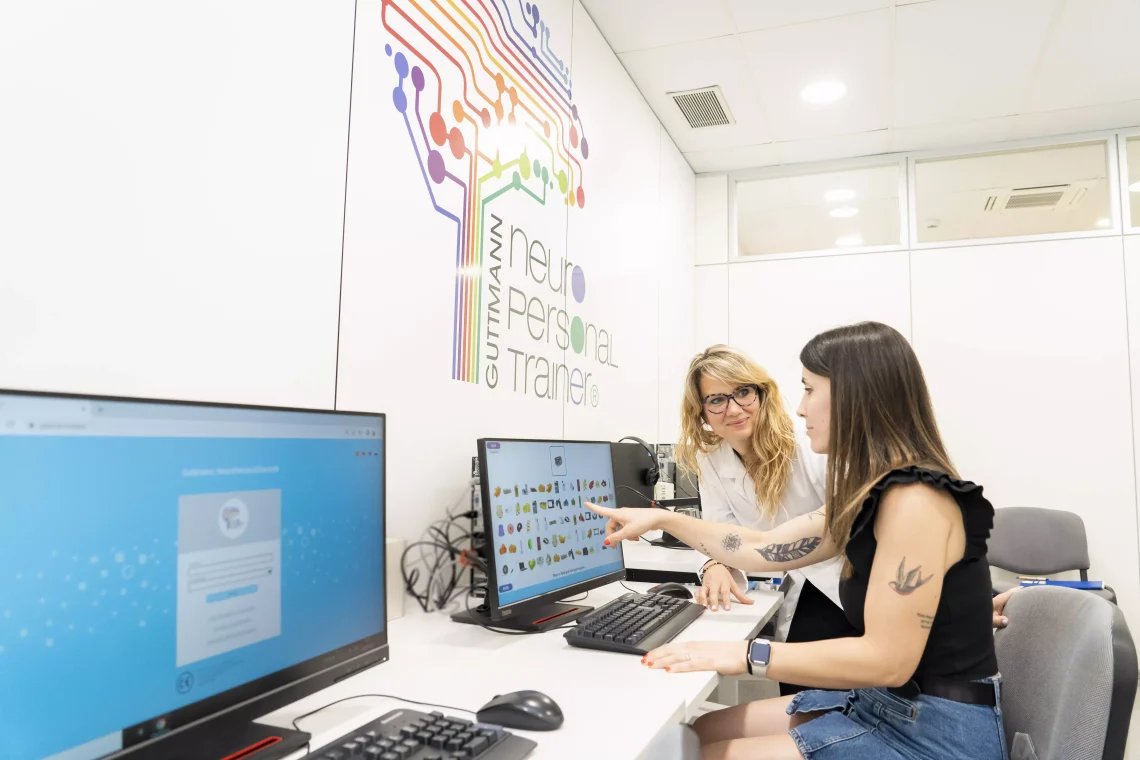In 2022, 358 adult patients with an acquired brain injury completed their intensive and specialised neurorehabilitation process, 23% of whom were of traumatic origin (TBI, traumatic brain injury), 55% of vascular origin (CVD, cerebrovascular disease) and 22% owing to other pathologies.
| Type of Injury | Patients |
| Traumatic brain injury | 83 (23,2%) |
| Stroke (CVD) | 195 (54,5%) |
| Other non traumatic brain damage | 80 (22,4%) |
| Total | 358 (100%) |
Population by gender
Among patients discharged in 2022, only 2.1% were readmissions for complications (prior to 2 years after discharge). The complications treated were traumatological surgery and digestive surgery.
Psychosocial situation
To evaluate the outcome of the neurorehabilitation process, we analyse where patients with an acquired brain injury go once they have been discharged from the hospital and also who they live with and their level of interrelation with other people and their environment.
Once the rehabilitation process had been completed, 83% of patients with an acquired brain injury returned to their residence or a new residence, 17% required an institutional alternative on a temporary or permanent basis.
If we analyse the situation of living with others on admission and on discharge, some variations are observed compared to previous years. Cases of people who return to live with their parents after discharge are increasing, and cases of patients that must be admitted to an institution are increasing. On the other hand, cases of people living with a partner, as well as living alone or with roommates, decreased.
We also assess the domestic and social situation of the patient, which helps us detect situations of social risk and make an appropriate intervention based on the social needs of each patient. In 2022, the social and domestic situation of the patient on discharge has improved in 43% of cases, is maintained in 27% and is worse in 30%.
Improved functional autonomy
To measure and evaluate the improvement in functionality of people with ACI, we have to differentiate between those of traumatic, vascular or other pathologies.
TRAUMATIC BRAIN INJURY
Of the 83 patients having sustained a traumatic brain injury (TBI) who received treatment and rehabilitation, 92.7% were seriously impaired on admission according to the Glasgow Coma Scale. Their mean age was 40.
One of the severity assessment scales we use is the Disability Rating Scale (DRS). According to the results obtained, we can state that our patients went from serious disability on admission (almost 12 points) to moderately serious disability on discharge (7.15 points) with a mean improvement of 4.31 points (p<0.01).
CEREBROVASCULAR DISEASE
The mean age of the 195 patients with cerebrovascular disease who received clinical discharge was 52. The Barthel scale was administered to assess their functionality, showing a mean improvement of 17.4 points (p=0.05) on the patient’s discharge compared to admission.
OTHER CAUSES OF BRAIN INJURY
134 patients with other causes of brain injury resulting from tumours, anoxia, infections, etc. completed the rehabilitation process. Their mean age was 48.
Regarding the functionality achieved, the figure below shows how our patients achieved an improvement in functional level in both the cognitive and motor areas (assessed using the FIM scale). In the total score, an improvement of 10 points was achieved on discharge compared to admission.
Finally, another indicator related to improvement in functionality is the fact that 83% of patients with brain injury who were admitted with a tracheostomy cannula were discharged without a cannula.

